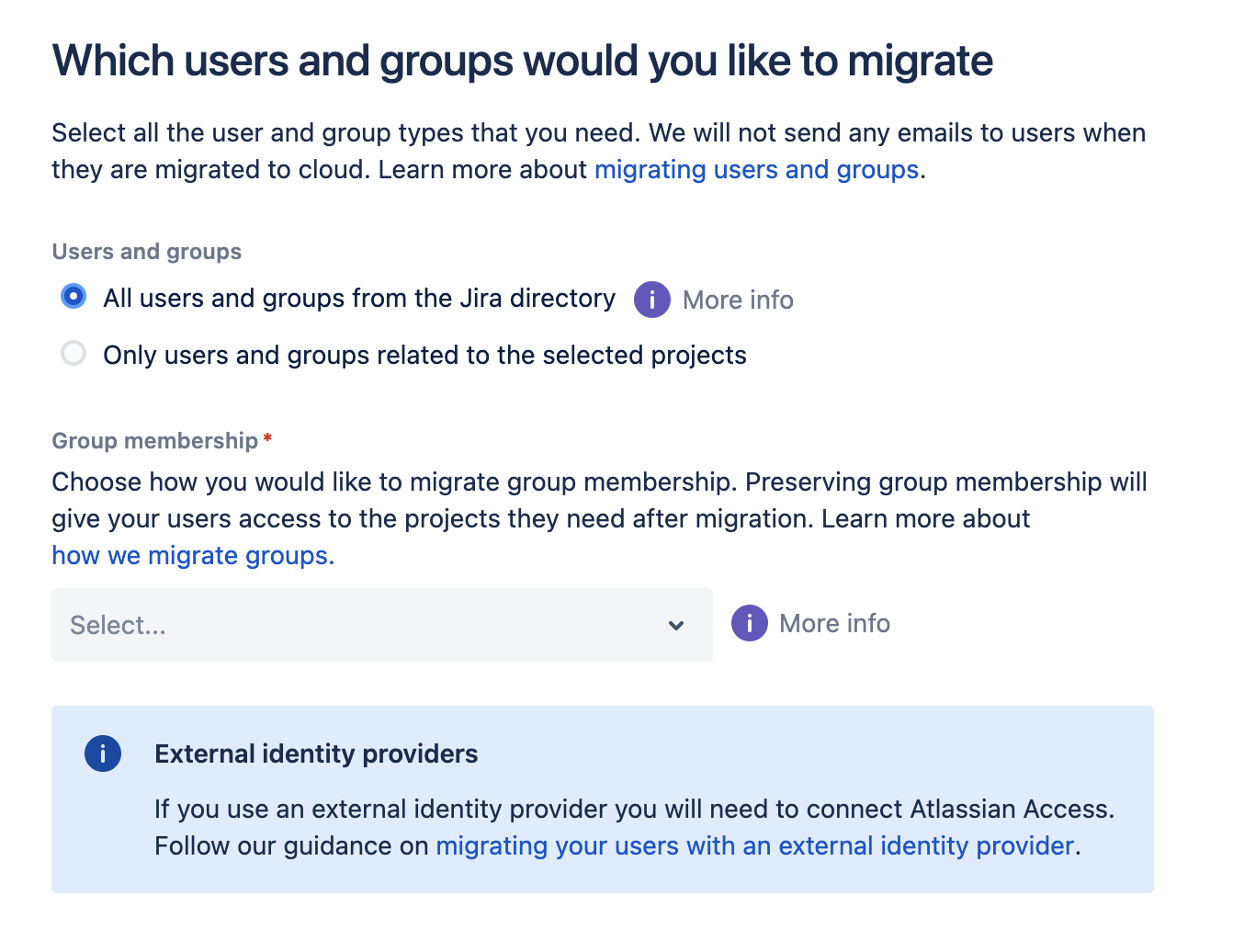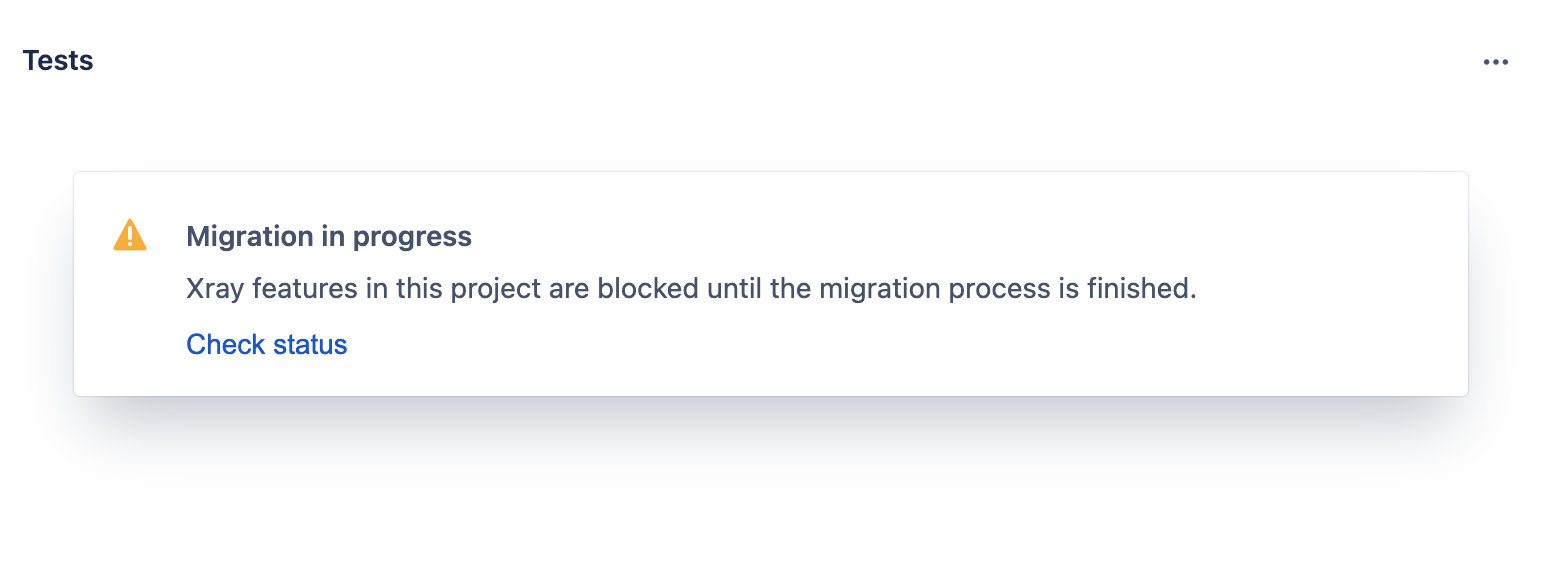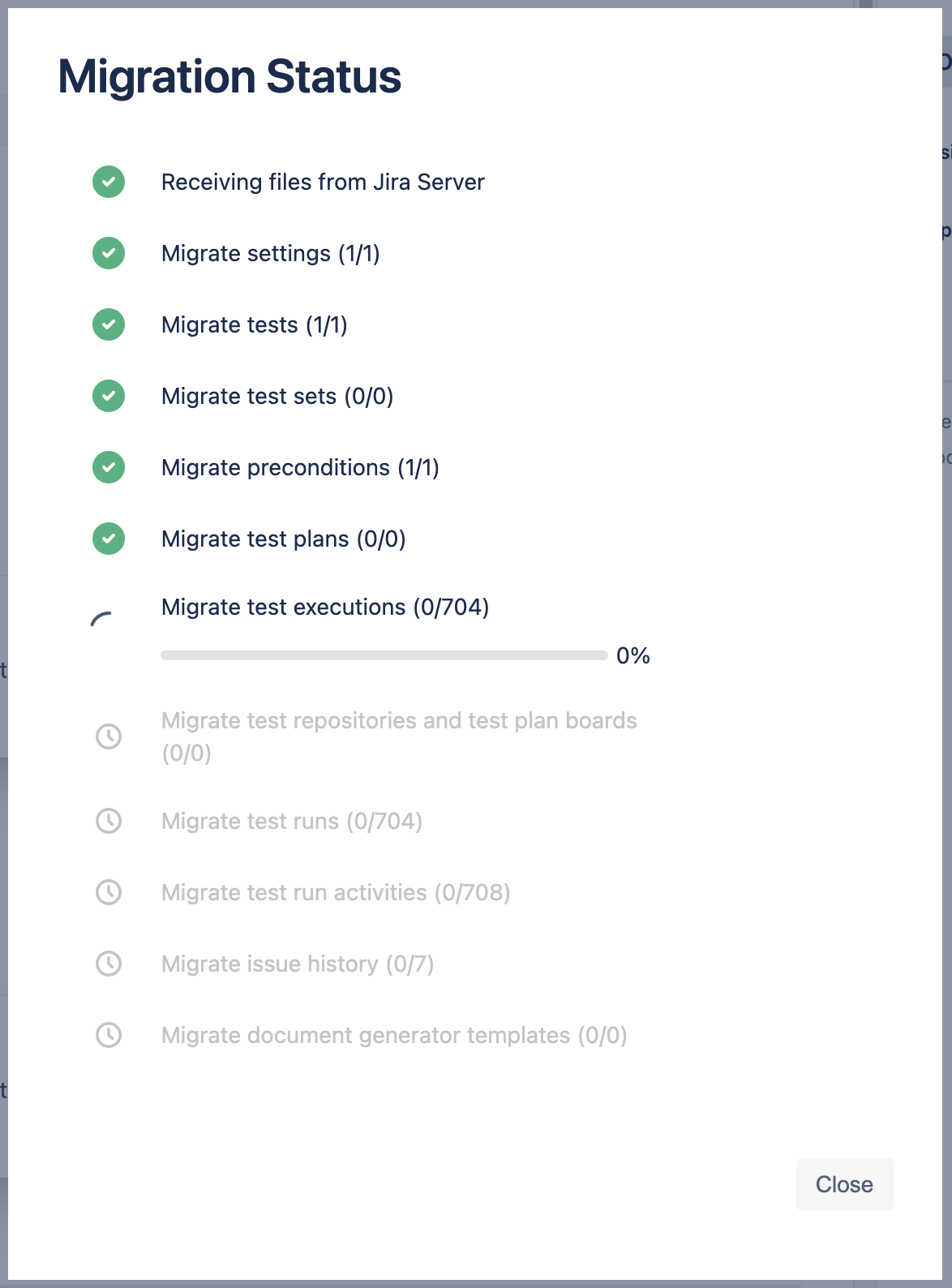This page describes the migration path you can follow to migrate Xray data from Jira Server/Data Center to Jira Cloud. If you have any questions about which approach best suits your organization, please contact our support team directly.
Before migrating from Xray Server/DC to Cloud be sure you've completed the steps recommended at "Steps to a successful migration":
Ready for a Checklist? Make Sure you do not forget any step and download our Xray Migration from Server to Cloud Checklist. Learn more at "Steps to a successful migration". Also make sure you are aware of the differences between Xray Server and Xray Cloud. Be also sure, that if you select the Xray Cloud Standard you are aware of the storage limit. If the storage offered by Xray Standard is not enough, you might consider upgrading to Xray Enterprise. |
If you are looking to migrate from Jira Server/DC to Jira Cloud, you need to consider the differences between Xray Server/DC and Xray Cloud. These differences might affect how your users work and interact with Xray.
The ideas, goals, and major features are the same. However, while there is great similarity between them, there are a few subtle differences between the two versions. This is mainly due to:
For a full comparison between the Server/DC and Cloud versions of Xray, please refer to Xray Server and Xray Cloud.
Atlassian provides the Jira Cloud Migration Assistant to help Jira users assess and migrate from an on-premise Jira instance (Server or Data Center) to Jira Cloud.
Our team has worked with Atlassian to make Xray available within the official Migration Assistant tool and we hope Atlassian will launch this expanded version of the Migration Assistant.
Before going any further, check the official Atlassian documentation and procedure:
https://support.atlassian.com/migration/docs/use-the-jira-cloud-migration-assistant-to-migrate/
https://support.atlassian.com/migration/docs/jira-pre-migration-checklist/
Any Xray related projects that are somehow connected, must be migrated together within the same migration, otherwise, any Xray link between the projects will not be present in the cloud after the migration.
E.g., all the Tests in the Test Plans of Project A must be part of the migrated Projects.
Avoid data change during the migration, otherwise the migration might fail. |
Due to the textual nature of the data in the activity logs, the entries are mostly copied directly. The language, phrases and markups may differ from server to cloud.
All the linked data must be migrated together so data integrity can be guaranteed on the cloud.
Not supported by Xray Cloud and will not be migrated.
Will not be migrated to cloud. (Miscellaneous settings section)
Configuration of Xray gadgets will not be migrated.
Xray Notifications
Xray Notifications (events) will not be migrated. Xray Cloud does not provide this feature.
Xray data belonging to the archived issues are not migrated.
In the past we've seen migrations failing due to archived projects. Xray does not have visibility/permissions into these projects so please check if you are trying to migrate archived projects.
Document Generator
Templates migrated from the Server must be revised once there are some differences between the server and cloud version.
A valid Xray app license is required to migrate Xray data, otherwise, Xray data won't be migrated to the cloud. |
Before the Xray migration stage is executed, all issues and Jira entities are migrated by Atlassian's JCMA. In order to guarantee that Xray migration is successful, all these Jira entities must be 100% migrated, without warnings. If you encounter problems in Jira's migration stage, please contact the Atlassian support team.
The name of the issue types needs to be the same on both server and cloud before starting the migration.
The Issue Type Precondition/Pre-Condition may have to be changed as it is named differently in the server and cloud versions of Xray.
https://support.atlassian.com/jira-cloud-administration/docs/add-edit-and-delete-an-issue-type/
Due to the way the "Migrate all data at once" option works on JCMA, when choosing this option a few additional steps must be taken to ensure compatibility with the Xray migration. So if you are using the "Migrate all data at once" option, please follow the steps below: - On the Server side, rename all Xray issue types like this (avoid spaces before and after):
- Still on the Server side, and only after the Xray types are renamed, create 6 dummy issue types like the list below:
After carrying out the previous operations, the issue types on the Server should look like this:
After the migration is completed, the dummy issue types created with this purpose can be deleted, and the Xray issue types can be renamed back to their original names.
|
The Issue Link used for Requirement Coverage is slightly different between Xray Cloud and Xray Server/DC. To ensure that Xray Cloud will recognise these links, the Issue Link type must be edited on Server/DC to match the link used by Xray Cloud:
This step must be done manually prior to migrating since the Issue Links are migrated by Jira instead of Xray.
The configuration can be found in MY_JIRA_SERVER_URL/secure/admin/ViewLinkTypes!default.jspa
Make sure that the following Xray-created custom fields are added to the Test Execution issue screen and are visible to all users in all projects that you are migrating.
The Issue Security Scheme may restrict Xray's access to issues during the migration.
If you are using Security Levels for Xray Issues ( Test, Test Set, Test Plan, Test Execution, Sub-Test Execution and Pre-Condition) - you'll have to temporarily add "Any Logged in user" to all the security levels used by Xray Issue Types or remove all the Security Schemes/Levels from those issues.
These checks are meant to help you plan your migration by taking into consideration Xray related constraints. The checks will let you know if:
If there are any such links, Xray will let you know which projects should be added to the migration to avoid ending up with missing links in the Cloud instance. This check should be done before any migration begins.
The preflight checks are available when the Jira Cloud Migration Assistant is installed and a version of Xray supporting the migration to Cloud is also installed. The page can be found in the Administration → Manage Apps → Xray → Cloud Migration. Here you see a table with all the instance projects listed, select all the projects for your migration and then press Validate. If there are no errors, you can leave this page and proceed with your migration through the Jira Migration Assistant. If there are any errors you can see the details and steps to fix the issues.

Example: Project Xray Test Project was selected for migration. The preflight checks found that there is a link to another project that is not part of the migration (Xray Dev Test).

We'll select the missing projects for the preflight checks and validate.

There are no more errors, meaning that the projects can be migrated together safely. We can now go back to the Jira Migration Assistant and plan our migration with both projects.
It is recommended that you select the option "All users and groups from the Jira directory" when choosing which users to migrate in the Jira Migration Assistant. This is due to the way that Jira checks which users are related to a project which will not consider users assigned to Test Runs.

The Xray migration starts right after the Jira migration. While Xray is migrating projects, the Xray app screens/actions will be disabled until the end of the migration. Those screens will show a warning and an action to allow the user to see the current progress of the migration. This progress shows details about what is being done.

Xray Cloud also provides a page on the app administration section with all the migration plans in progress and done. Here the Jira administrator could see the history of migration and the ongoing migration plans. Learn more about this here.

If the Xray migration is not successful during the Jira cloud migration plan, we highly recommend trying it again. Before trying again, make sure the cloud project is removed. If the issue persists, please contact our support in order to get help.
To learn more about migration from Xray Server to Xray Cloud you might want to take our dedicated course available for free at Xray Academy: Migration from Xray Server to Xray Cloud |